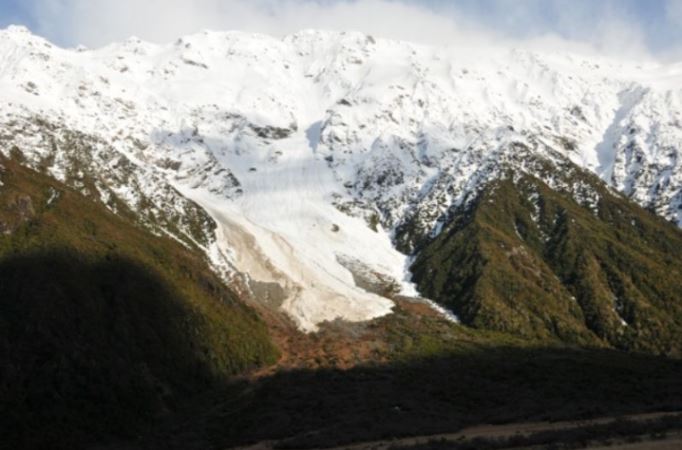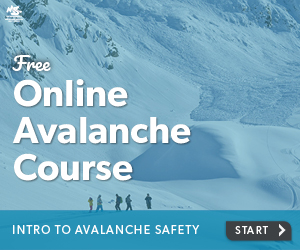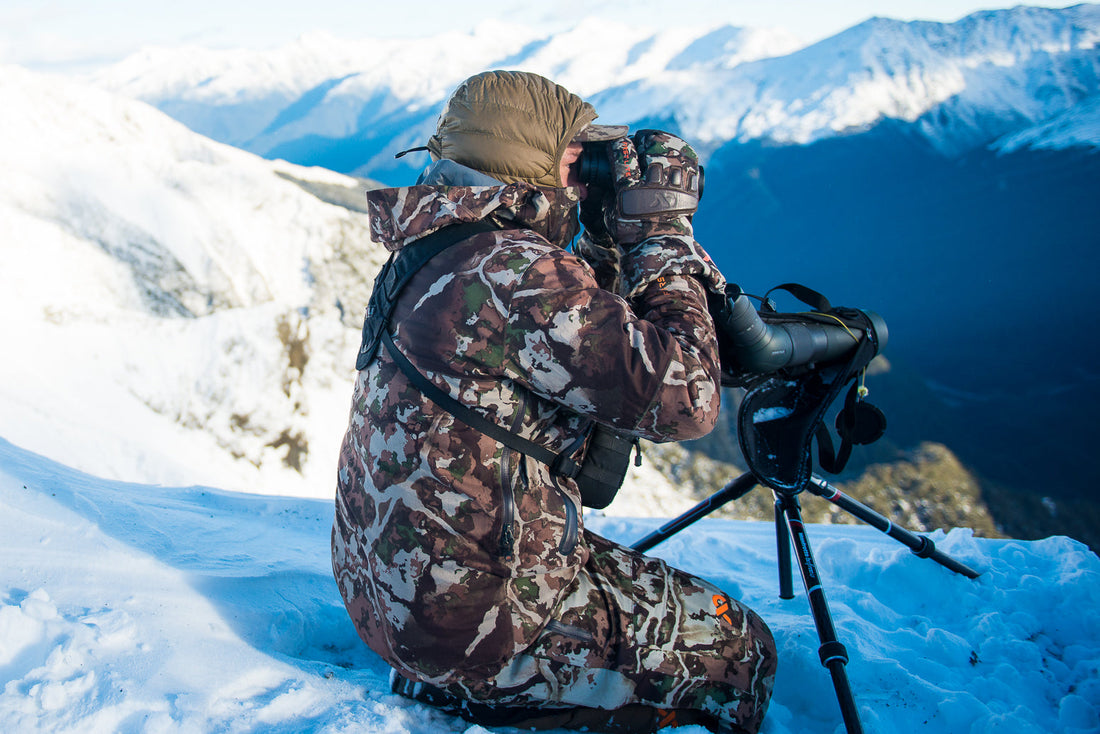
Spring Objectives
Cover Image - Sean Powell
The days are steadily getting longer, and depending on the altitude the plants will soon start growing. It’s a great time to get after it in the Southern Alps.
It’s also a time where we need to give a little thought to some of the hazards associated with springtime hunting, as even river flat hunting can catch a few people out. There’s a lot to be said for having the right mindset, and being prepared for the unexpected.
Weather
Spring time weather is really only predictable for being one thing, which is unpredictable. Be prepared for all four seasons, and especially be prepared for wind. Pay attention to a few different forecasts and pick that sheltered campsite carefully.
Always have your rain gear in your pack, it can save you a huge amount of heat loss just working as a wind breaker.
I did an overnighter with just the dog in a big East Coast valley, and spent the evening looking over a number of bulls on the opposite face. The morning plan was to climb the first hour or so under the head torch and hopefully be in prime position before the bulls started climbing themselves. As soon as I got to the river the next morning I knew it had come up a bit but I thought I’d find a braid and get through, which I would have if I'd pushed it. But it occurred to me that the reason it had come up overnight was because it had been raining hard on the west coast and that the head waters of my valley had obviously copped the spill over. So for all I knew I’d get 5 or 6 hours of hunting on the other side then have zero chance of getting back. Not an option given the forecast.
Rivers
We are literally a small skinny Island in the middle of the ocean, hence our weather is very changeable and this can be especially so in springtime.
Keep your eye on the forecast as always, and have a plan B in case you can’t cross that river to get home. Plan B might be as simple as that extra dehy meal you threw in your pack, encase you had to wait the river out.
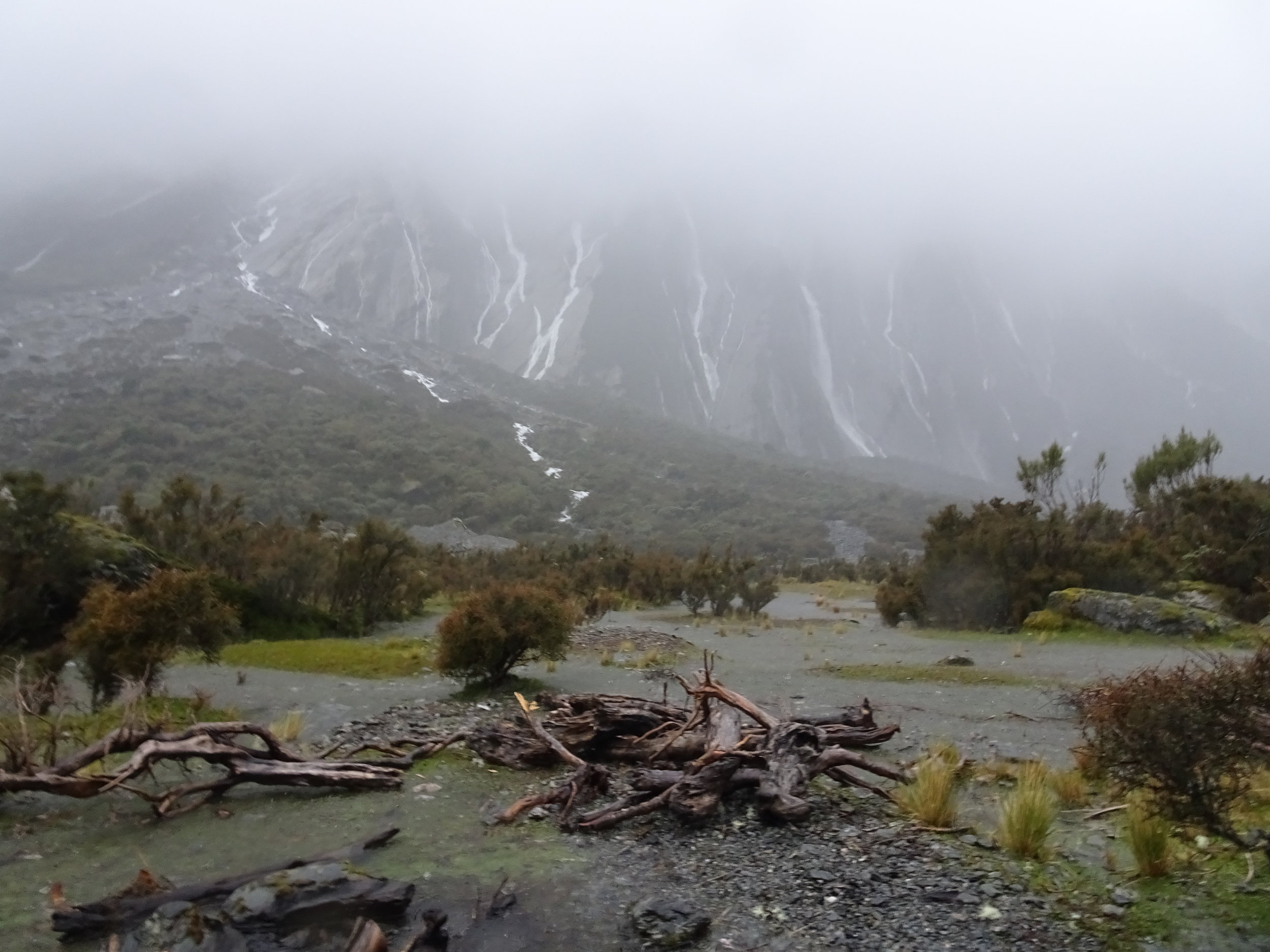 Water pouring off the steep sides of the valley.
Water pouring off the steep sides of the valley. 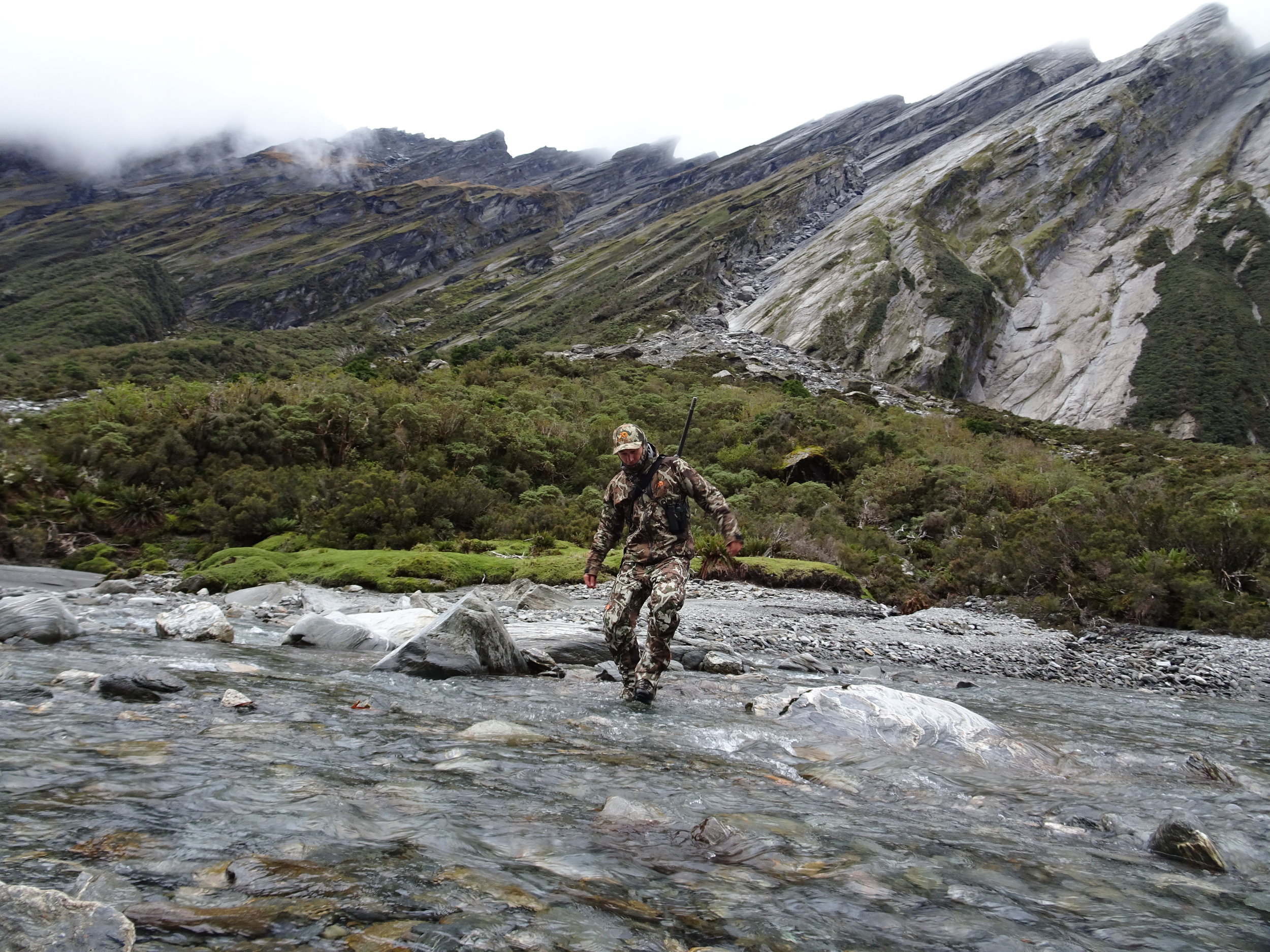 After the 140mm of rain pictured above, the next day this small stream was raging and perhaps a couple of meters deep.
After the 140mm of rain pictured above, the next day this small stream was raging and perhaps a couple of meters deep.
The classic here is those big East coast catchments and the NW wind accelerating that late spring snow melt. During the heat of the day the snow melt increases which can make the rivers and even side streams rise substantially. The hunter that easily crossed the river in the truck or on foot with his head lamp on in the morning, can easily find themselves stranded and frustrated until it drops again. Key thing here is, just don’t push the boundaries.
We have also had a number of guys getting into trouble in our Westland rivers and creeks lately, some with good outcomes and others not so good. It’s fairly easy to tell the gradient of a creek from looking at a topo map, and often those Westland creeks become quite steep gorges.
Avalanches
If your sneaking around chasing tahr or chamois just below or above the snowline then you have to be aware of what’s above you. This season we haven’t exactly had a lot of snowfall, but we do currently have some persistent weak layers and regardless, those spring slide paths will run. This means that at some point in spring that the snow pack with turn to slop, loose cohesion and cause a big dirty wet slide, often to well below snowline or even to valley floor. You don’t want to be there when this happens and often you can see the smashed up tree’s and scrub from the previous year’s spring slides.
These paths usually run every spring, so take note of the smashed up scrub and debris and don't loiter around in these places of stop for lunch here.
Avalanches can run well below the snowline as this photo from Trev Streat shows.
Check here for the relevant Avalanche Advisory Forecast.
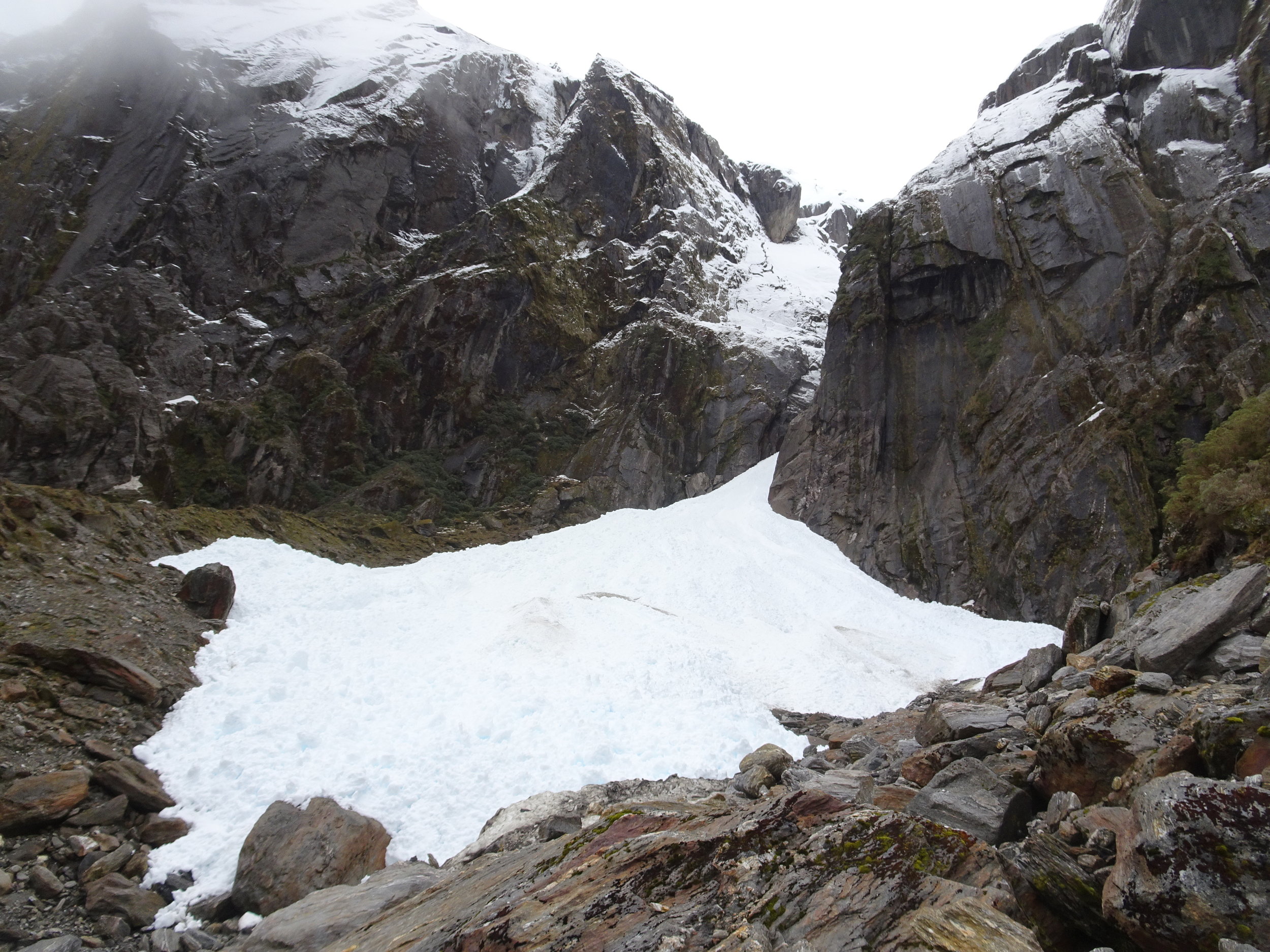
Why not kickstart your avalanche skills, with this free course from The Mountain Safety Council.
Or at least become check out some of the Mountain Safety Councils online video's about route selection and how to use an ice axe to self arrest.
Check it out here > https://www.youtube.com/playlist?list=PLeLnlpLtcbKpHlVntdGphcm5b3-UNz38K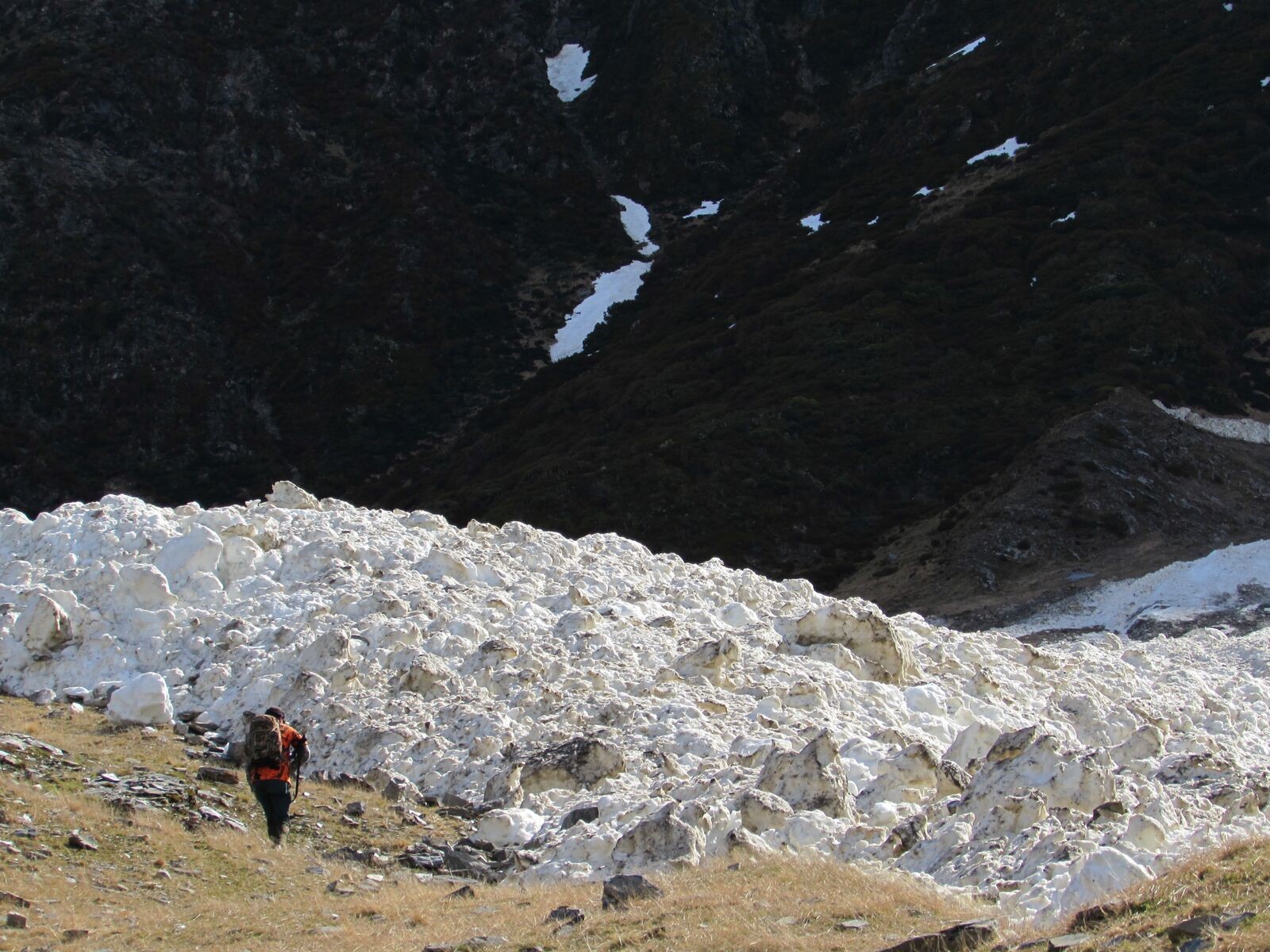 Avalanche debris - image @ R Wells
Avalanche debris - image @ R Wells
Snowtravel
Typically in spring the snow packs surface refreezes at night after having become wet "mush" during the heat of the day. Apart from the obvious sliding hazard this can be a good thing for travel in the early morning as you can move quite easily staying on top of the frozen surface IF you have the right gear. i.e.-An axe and crampons.
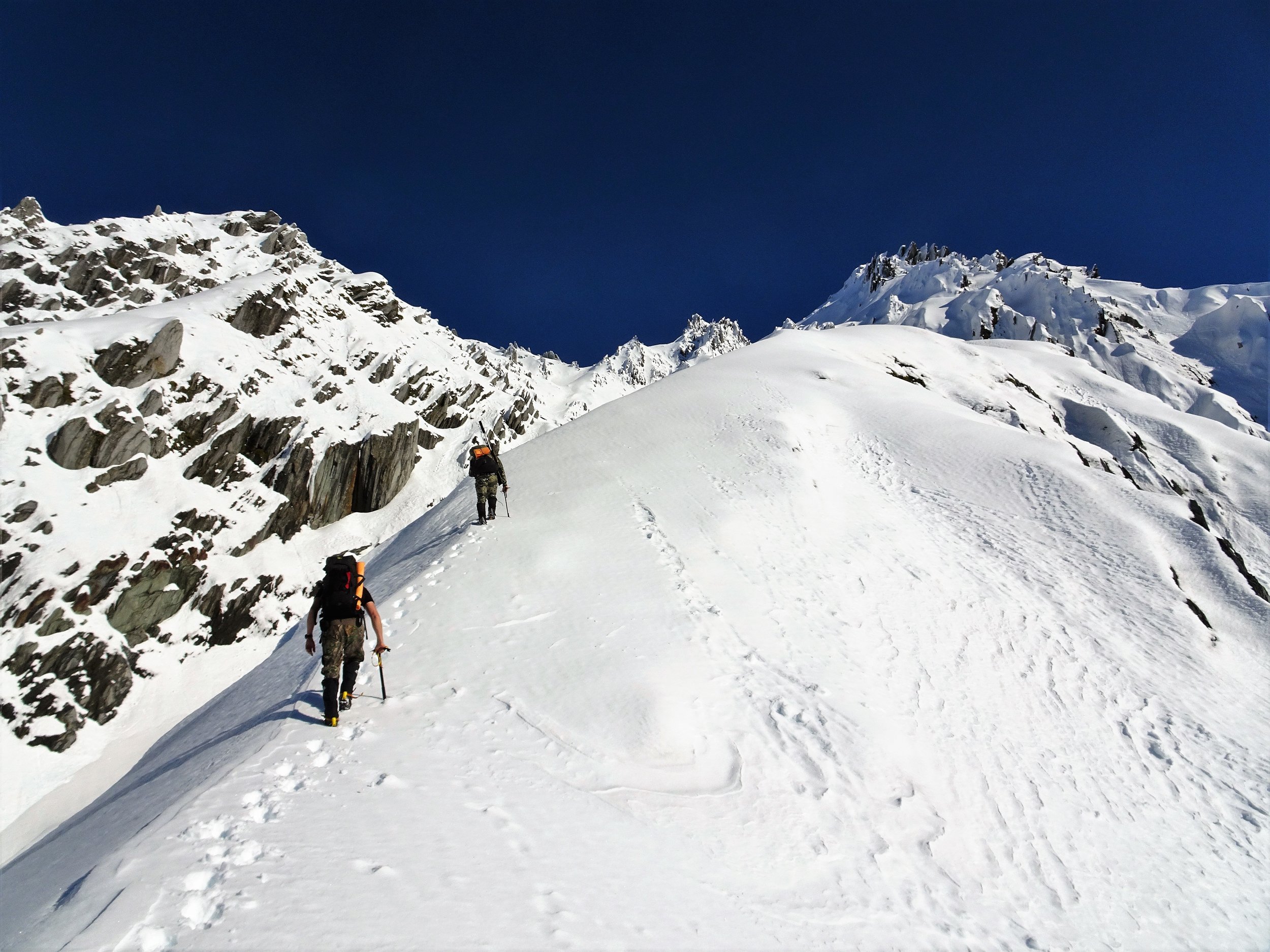 Staying on the ridges and safe high points to minimize the risk.
Staying on the ridges and safe high points to minimize the risk.
The downside is with the heat of the day the snowpack becomes far less stable and a dangerous place to be in general. The tell tale sign of this is "rollerballs" where balls of snow start to roll down the face, often picking up more snow along the way. Roller balling is a sign of a potential loose, wet avalanche. Check avalanche.net.nz in your region as this will mention if you need to watch out for these during the day.
We had a classic example of this a couple of years back when we climbed up a bunch of steep country at first light and in frozen snow. The day turned into a scorcher which completely cooked the snow pack and had roller balls running all over the place. We had no choice but spend the day on safe high points and ridges until the temperatures dropped again and we could climb down just on dark. Without understanding the significance of the cooked snow pack we could have very easily found ourselves in a bunch of trouble.
Image @ Sean Powell
Rockfall
Some of this applies year round. But with snow melt and then the overnight freeze thaw, what can happen is rocks can get cracked apart by the expanding ice. And steeper faces can become a bit of a hazard as a result. Or some faces are just loose and unstable and are always crumbling away.
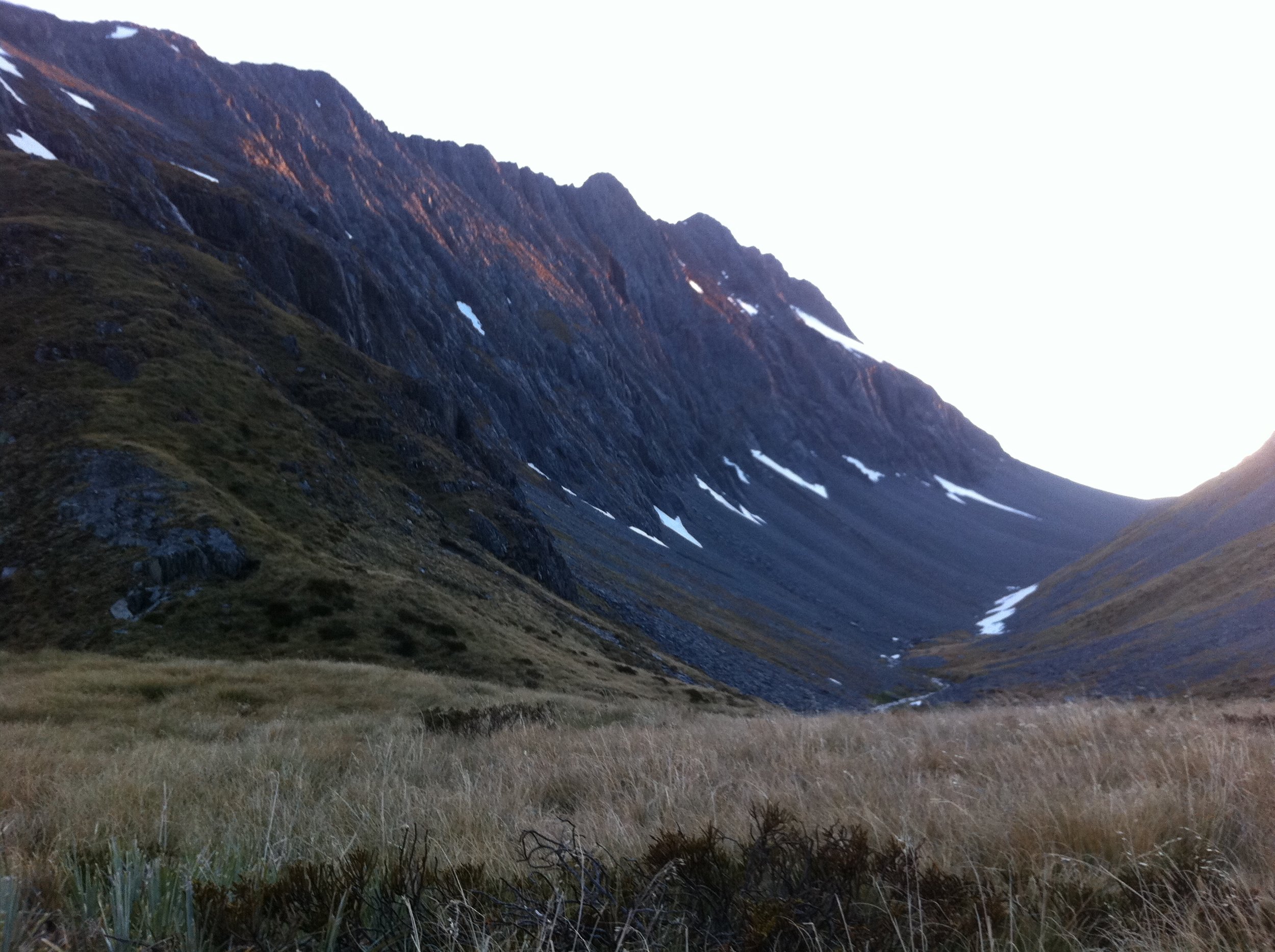 Clearly some rockfall potential and a few places not to camp. Image @ Ewan Black
Clearly some rockfall potential and a few places not to camp. Image @ Ewan Black
I learnt my lesson here quite a few years ago when I set camp at about 1600m right beside a stunning tarn in a head basin that had one really steep wall. All through the night as it froze this face was releasing rocks, which no doubt sounded bigger than they were given it was a clear crisp night, but still I was shitting myself. Looking back now I should have noticed all of the loose boulders that had rolled down by my tarn previously.
Have a look around where your thinking of camping, and if the rocks around you aren’t old and covered in lichen and moss, then move on.
Terrain
Yip chamois and tahr hunting can take you into some steep country. We all have different comfort levels, so knowing your limits is key. We can’t get it right all the time, but knowing you can retrieve that animal without scaring yourself stupid is important. The below video makes this pretty apparent, he did however manage to get his bull the next day.
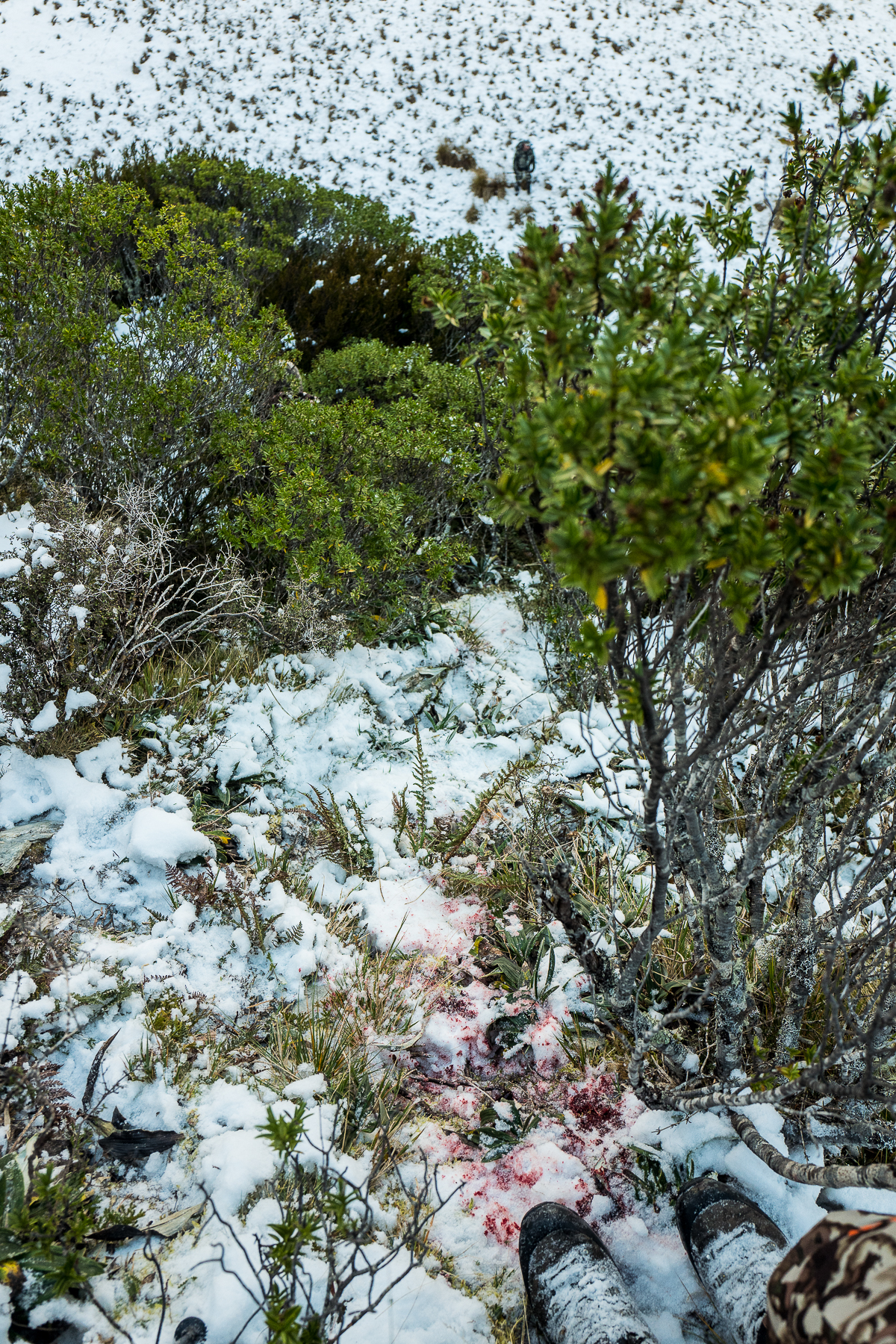 Just steep enough, note the blood trail and Tom standing on the flat at the bottom. Image @ Sean Powell
Just steep enough, note the blood trail and Tom standing on the flat at the bottom. Image @ Sean Powell
100% of NZ alpine hunting fatalities are from falling
– Source_ A Hunter’s Tale 2017 Image @ Sean Powell
Image @ Sean Powell
Layering
Hunting in the mountains requires a heap of physical exertion followed by stopping and glassing for game. Doing this over and over means you really have to have super breathable gear and a smart layering system to deal with the weather, as well as the sweat from physical exertion.
A good quality merino base layer such as the stuff from First Lite is ideal, as well as being made of New Zealand wool. A merino base layer is great as a part of a layering system in winter, but also on a stinking hot summers day you’ll still be comfortable and will avoid the sandfly’s and sunburn. There’s a bunch of reasons why merino is far better suited to New Zealand hunting than synthetics, click here to understand more. Add a super breathable mid layer, and you’re sorted for quite a wide temperature range.
Regardless of the forecast you should have in your pack an insulation layer and an outer layer to block the wind and rain.
Hunting apparel has evolved and we’ve now got hunting specific insulation and rain wear that's seriously high performing and super packable. Get the best gear you can afford, and do your homework with regards to the breathability of what your buying.
There’s a big difference between what will work for a quick hunt on the back of the farm, and what will actually work hunting in the mountains. The vast majority of brands selling rainwear in New Zealand conveniently never mention their breathability ratings, and are miles away from comparing themselves to the best in the game.
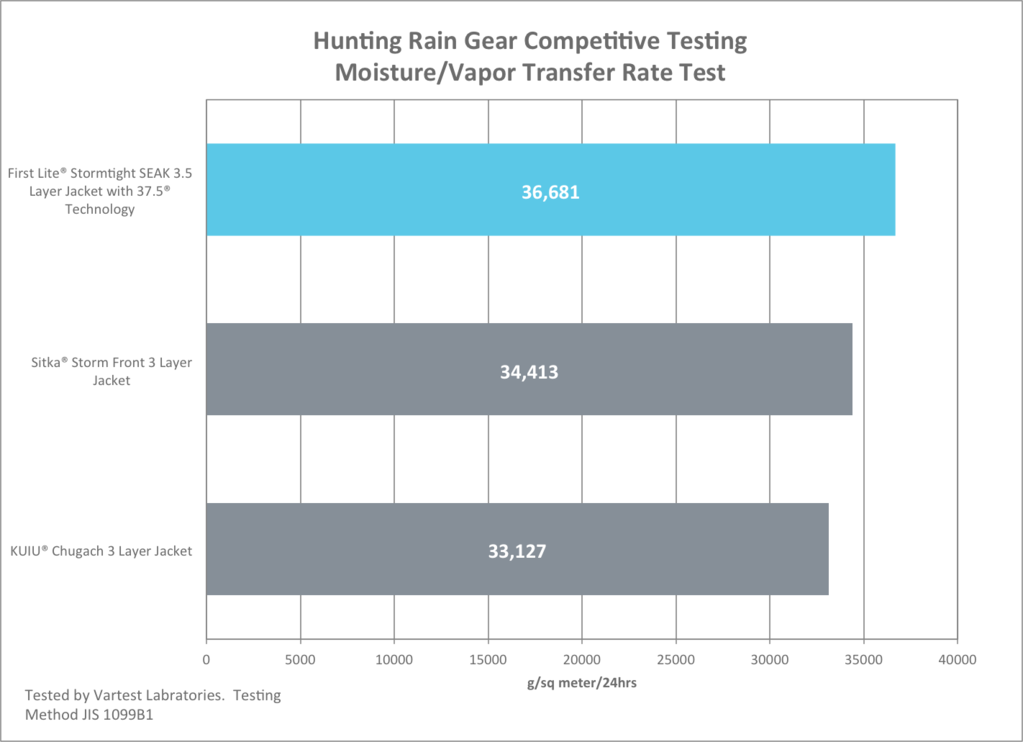 Click here for more on Waterproofing & Breathability stats and how it actually works.
Click here for more on Waterproofing & Breathability stats and how it actually works. 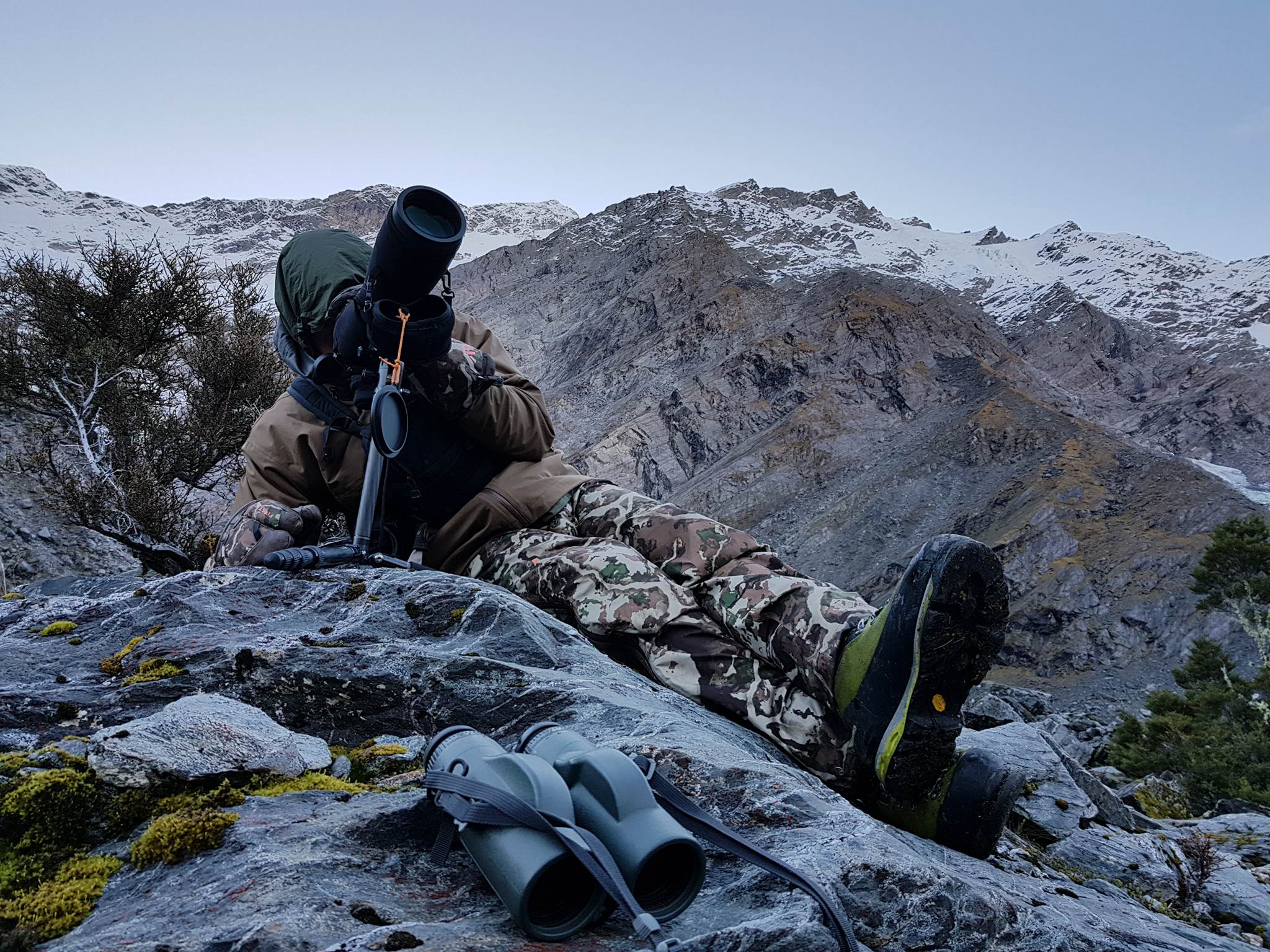 Luke Potts in Tahr Country
Luke Potts in Tahr Country Fitness
The fitter you are, the more success you will have and the less likely you are to pick up an injury. Build up a good base level of fitness and choose those multi day objectives wisely, as it’s no fun breaking yourself on a climb or battling under a heavy load. By not struggling with a lack of fitness you’ll also make better decisions on the hill, and improve your chances of success.
Luke here at PointsSouth thinks nothing of climbing 1000m in elevation on an evening hunt. I’m not saying you need to go to that extent, but make an effort to get fit.
Packing good quality food on the hill just makes sense as your burning a hell of a lot of calories everyday.
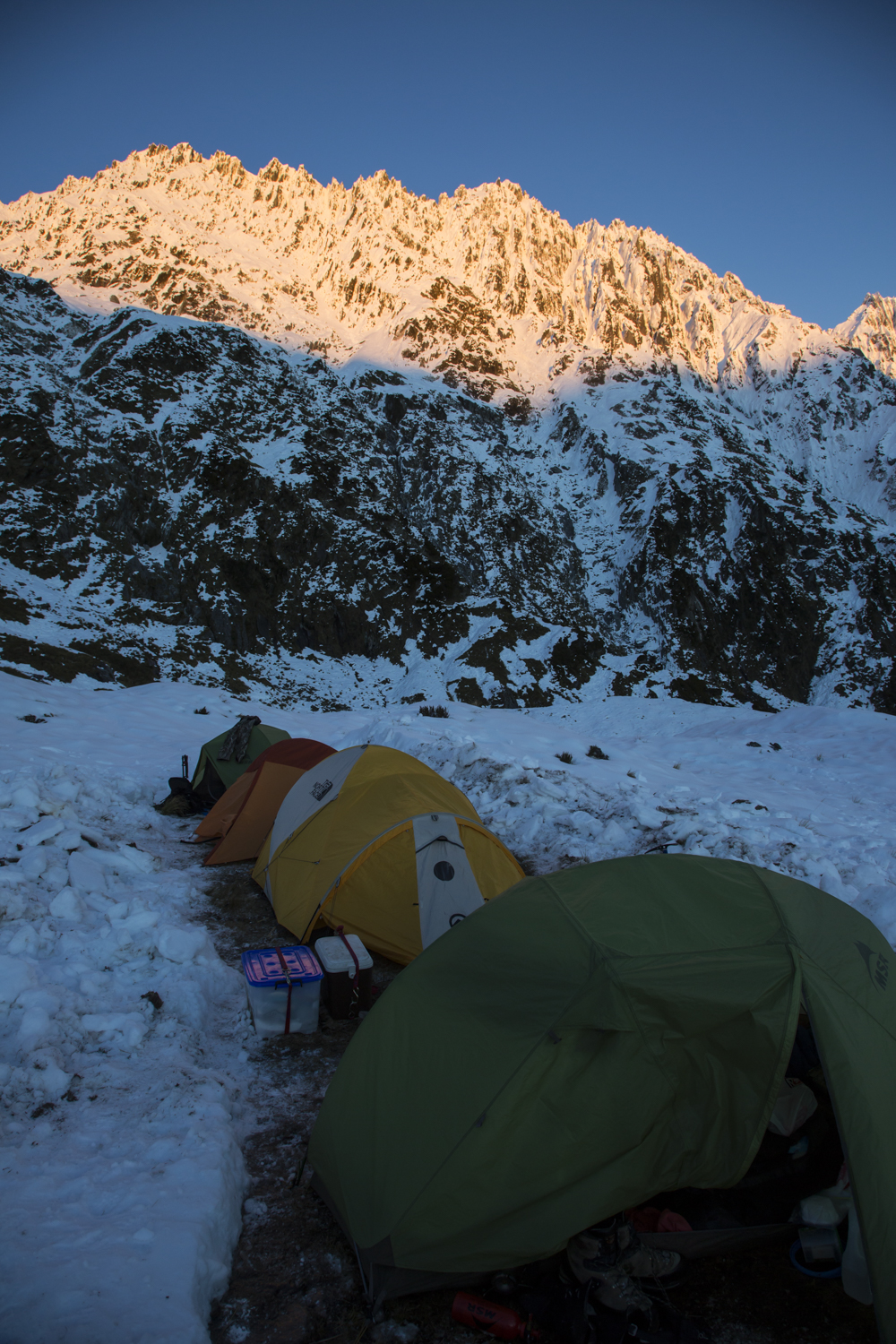 By using the right equipment and understanding the snowpack, we managed to take a bull from just below the skyline centre picture.
By using the right equipment and understanding the snowpack, we managed to take a bull from just below the skyline centre picture. Ben Campbell spotting bulls
Ben Campbell spotting bulls Overall there’s a few basics that apply to any hunting trip.
1- Always leave your intentions with someone who will actually follow up if they haven’t heard from you when your due to be out.
2- Always carry a first aid kit & your PLB (Buy a good First Aid kit HERE)
3- Check both the weather and avalanche forecasts. (METSERVICE & AVALANCHE ADVISORY
4- Stay within your limits when it comes to steeper terrain.
5- Respect those river crossings
6- Have the best quality gear you can afford
7- Consider your target and the retrieval process before you take the shot
Head to the New Zealand Mountain Safety Council for more information.
- A Hunter’s Tale – A deep dive into hunting incidents in NZ


